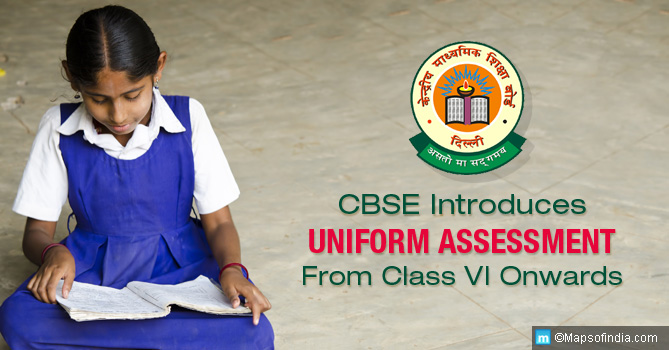The Continuous and Comprehensive Evaluation (CCE) method of assessing a student, which was introduced in Central Board of Secondary Education (CBSE) affiliated schools all over India in 2009, has now been junked.
CCE will now be replaced by a new format, ‘uniform system of assessment, examination and report card’ for classes VI-to-IX from the academic year 2017-2018. CBSE aims at standardising the pattern of education and evaluation across the schools in India.
This step is related to the recent restoration of class X board exams from 2018, which had previously been made optional along with the introduction of CCE.
The Uniform System of Assessment, Examination and Report Card
Under the uniform assessment scheme that stipulates a two-semester system – complete with half-yearly and annual examinations – the CBSE introduces the following template:
- This pattern of assessment will be followed from class VI-IX.
- All schools under the purview of CBSE will have to adhere to the template issued by the CBSE from examinations to report cards.
- The report cards will bear the logo of the board.
- The new scheme has two terms, half yearly and yearly.
- Pen-paper test weightage will now be 90%.
- Ten marks in each term will be set aside for periodic assessment, which will include notebook submission and subject enrichment (five marks each).
- The new report card will project the half yearly/ yearly marks scored in each subject and the corresponding grades, as well as periodic assessment of notebook and subject enrichment.
- It will also have co-scholastic assessment where students will be graded on a three-point scale.
- The format changes in class IX, where the report card will have scores of a single yearly term comprising a periodic test, notebook, subject enrichment and annual examination.
- For the class IX students, the co-scholastic grading will be on a five-point grading scale.
- The grading system for classes VI-to-VIII will be from A1 (91-100) to E (32 and below).
- The co-scholastic activities will include regularity, participation, output, teamwork, and health and physical education (including yoga and martial arts).
Syllabus
Under the CCE format, the syllabus contained only of the topics covered for that particular period. Now under the new pattern, with the aim of preparing the students for class IX as well as class X, where the syllabus of the entire year will come in the board exam, the syllabus from classes VI-to-VIII (2018 onwards) will include:
- Syllabus covered till the exam time for the half yearly.
- 10% of the first term + the syllabus of second term for class VI.
- 20% of first term + the syllabus of second term for Class VII.
- 30% of first term + the syllabus of the second term for Class VIII.
- CBSE schools are required to follow the NCERT syllabus in the upper primary stage.
Change Over
The reasons for the change over from CCE to a two-semester programme are:
- To bring a uniformity in assessment and examinations conducted in schools falling within the purview of CBSE. Since the introduction of CCE in 2009, schools were varying in its application and this disparity in the system resulted in students facing problems when migrating to other schools.
- To gradually prepare the students in appearing for the class X board examination, in which they will have to study the syllabus of the entire year.
Conclusion
The introduction of CCE saw a great structural change not only in the assessment but even in imparting education, where students needed to study only the topics for that particular term and then conveniently forget about it. For subjects like science and mathematics, this kind of a pattern did not make sense as each chapter is the base and foundation for the following ones.
All the more so, instead of reducing the student’s stress and pressure, CCE saw students jumping from one examination to another which included four Formative Assessments and two Summative Assessments apart from co-scholastic, notebook and periodic assessments. The teachers, too, hardly had any time to teach because they were busy filling the complicated report cards.
With the introduction of the new uniform assessment scheme, students may just have the time to learn, acquire quality education, instead of concentrating on learning by the rote method just for the purpose of appearing for examinations.






